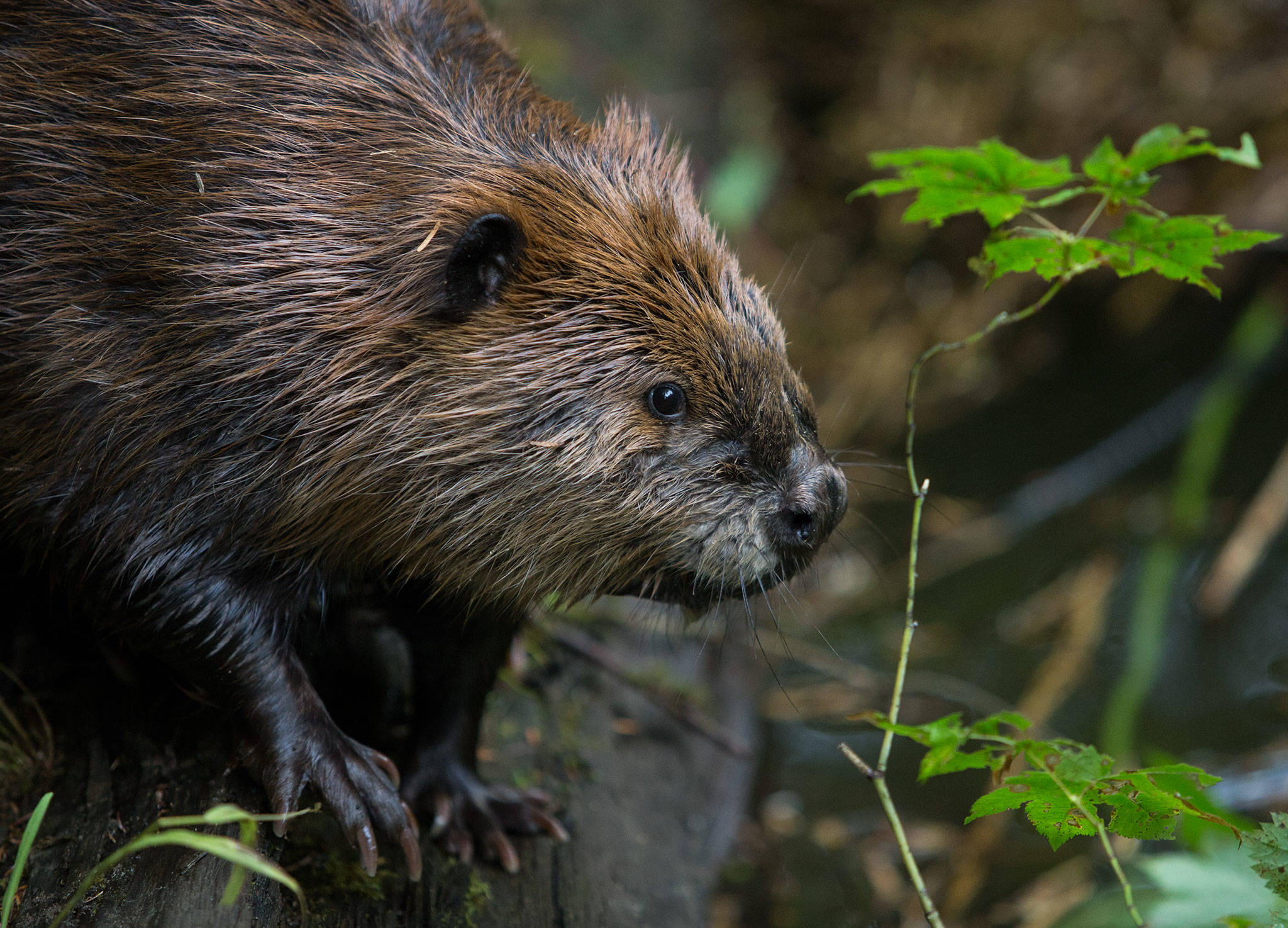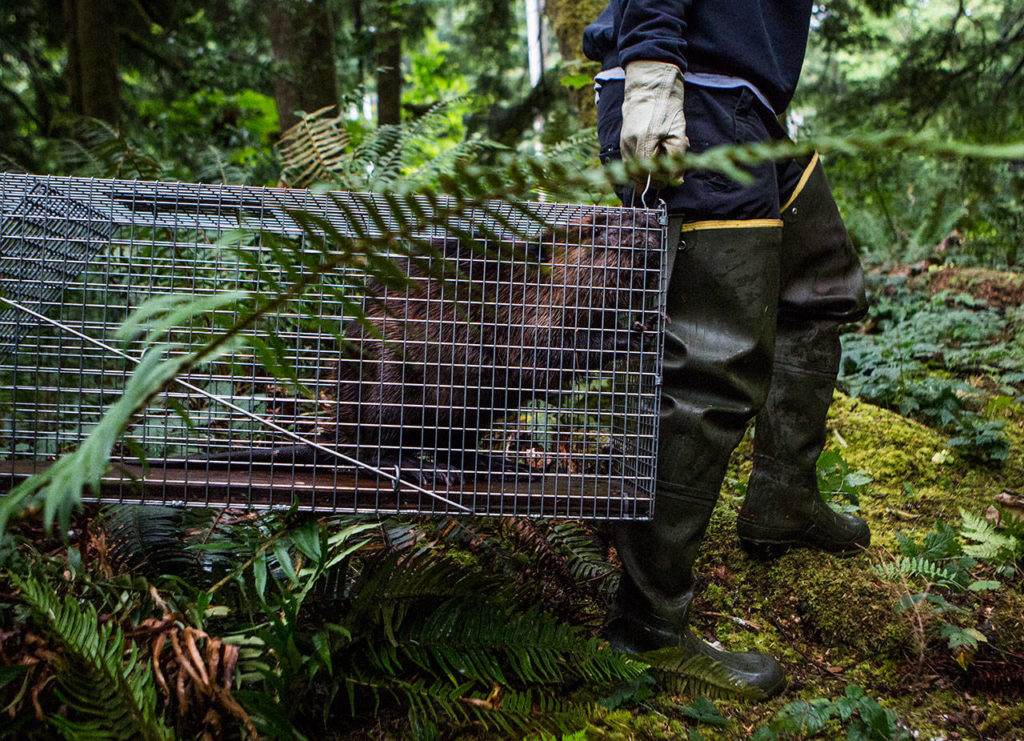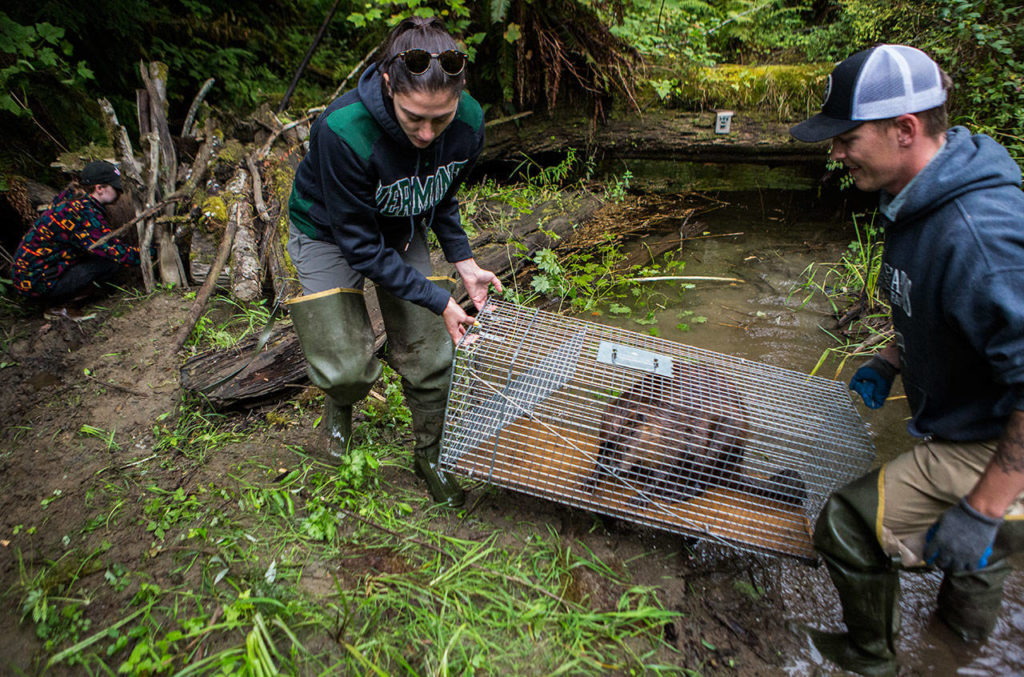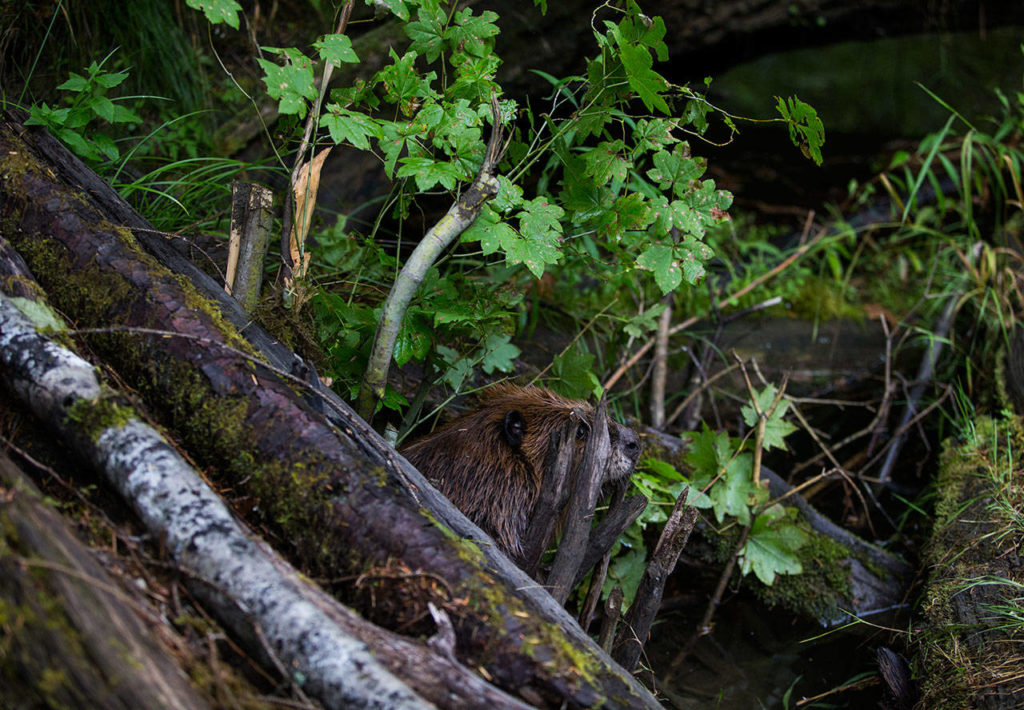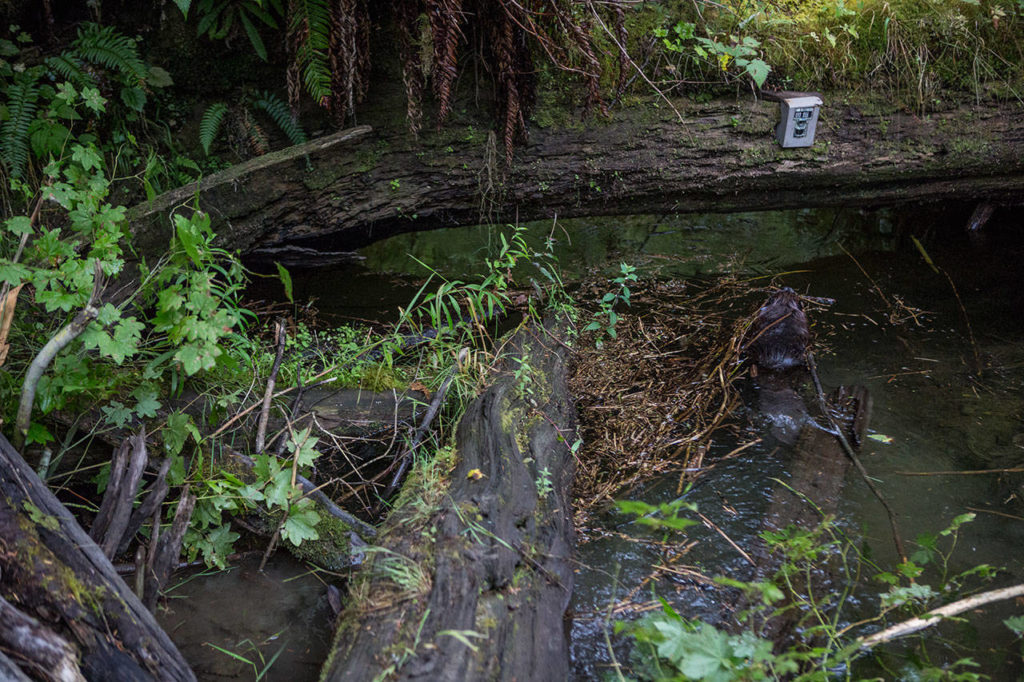SULTAN — She was a King County girl living the high life on Lake Union.
He made his home in a cramped culvert leading to a detention pond in Snohomish.
Then, one day in August, the two beavers met at the Tulalip fish hatchery. They sniffed at one another and sized each other up. By the next morning, they were sleeping in the same lodge.
“These guys took to each other almost immediately,” said wildlife biologist Molly Alves.
Now the pair have a new home, somewhere in the Mt. Baker-Snoqualmie National Forest. There, they’ll build new dams and transform the landscape around them.
Their meeting wasn’t an accident, but rather a match made by wildlife biologists working with the Tulalip Tribes. Since 2014, biologists Alves and David Bailey have spent their summers moving beavers from areas where they’re considered nuisances to new homesteads in the forest.
With a warming climate, tribal leaders hope the crafty rodents will play an important role in sustaining water availability and preserving aquatic species, like salmon. Scientists predict the future will bring new hardships to riverine ecosystems. Warmer stream temperatures could negatively impact fish. And more precipitation in the winter and less in the summer, combined with eroding banks and less snowpack, will lead to less water storage.
When the remaining water eagerly rushes to the ocean, the Tribes’ hope is that beavers, like the two relocated in August, can become nature’s water managers.
More water, and cooler, too
So far, Alves and Bailey have transported over 100 beavers to 14 different sites in the Snohomish River Basin. While the sample size is limited, the results so far are promising, said Benjamin Dittbrenner, who obtained a Ph.D. recently after completing a dissertation based on the project.
Within a year, relocated beavers have had dramatic effects on their surrounding hydrology, Dittbrenner writes in his study. Even new dams can impound extraordinary amounts of water. The relocated beavers can create over 61,000 gallons in surface water in new storage along a 328-foot stretch of stream, the study states. The groundwater table can nearly double in size, as well.
Temperatures downstream of beaver ponds have dipped on average 2.4 degrees Celsius, while control areas typically became warmer. With warmer water comes less dissolved oxygen, which all aquatic organisms need to breathe.
Dams create other benefits for aquatic life: The water becomes cleaner and deeper, creating ideal conditions for fish to survive and lay their eggs. In the time she’s worked on the project, Alves said she’s seen new salmon make their way to the beaver ponds in search of spawning grounds.
“The reward is immediate,” she said.
There’s plenty of room to expand on the successes. According to Dittbrenner’s study, 33% of the Snohomish River Basin’s streams are conducive to beaver living. Of that, only a quarter are currently taken advantage of.
Dittbrenner notes that the effects beavers have on an environment can vary from region to region, and can be influenced by the surrounding geography.
While there have been several studies on the impacts of beavers, there’s relatively little research done on those that have been moved to a new area. Partly, that’s because relocating them wasn’t sanctioned by Washington state until legislators passed a bill in 2017 saying otherwise. The Tulalip Tribes, however, have operated under sovereign law, and through a memorandum of understanding with the U.S. Forest Service.
Speed dating
Most of the calls Alves and Bailey get are for allegedly nuisance beavers. They won’t move all of them, Alves said; just the ones truly causing problems.
Beavers have a bad rap and tend to get into “sticky situations” with infrastructure, Bailey said. Like the one that lived in a culvert.
“First and foremost we’ll try to leave the beavers on site,” he said.
If a complaint is just about a downed tree, biologists will try to work with the landowner to keep the beavers on site. Other situations require more urgent intervention, like when roads are flooded.
Relocation can be a matter of life and death for the beavers. If Alves and Bailey don’t do something, a private trapper might be called, and the beavers could be euthanized on the spot.
If there’s a family, they’ll all be moved together. If they’re solo, the biologists will try to find a partner.
“Beaver speed dating,” Alves calls it.
The trickiest part of the matchmaking process is identifying gender. Beavers have internal genitalia, meaning the gender can’t be determined from just looking at them. Instead biologists have to express the castor sacs, located right by the anal glands, and analyze what liquid comes out. If it’s brown and viscous and “smells like motor oil,” the beaver is a boy, Alves said. Females, meanwhile, excrete a white, runny, “funky-cheese smelling” liquid.
The rest is straightforward. The biologists will keep the beavers in a temporary den at the Tulalip fish hatchery, where the rodents have the opportunity to see if they like each other. If they’re in the same lodge the next morning, they’re likely to commit to being lifelong mating partners.
“It’s not very complicated,” Alves said. “Beavers form very tightknit bonds.”
After a few more days to make sure they’ll stick things out, the team will load the beavers into cages and drive them to a new destination. Ideally the new home will have ample food, shore banks that aren’t too steep, and plenty of water and spots to hide from predators.
“You can’t just leave them in a puddle and expect them to survive,” Alves said.
The biologists even built a starter lodge to help the transition, though Alves isn’t sure if that’s just to make herself better.
“Beavers also typically just like to do the work themselves,” she said.
In the months after the relocation, biologists will monitor the beavers through cameras and occasional site visits. But what the beavers do is up to them, and sometimes things don’t go as planned. In the past, beavers have wandered off, to be found later many miles away. Other times, they fall victim to predators or traps set by people. And particularly bad storms, like the ones in the winter of 2015, can completely blow out dams.
So far, beavers have a nearly 50% rate of setting up a permanent residence at the selected sites, “which is high for working with wild animals that are extremely mobile,” Alves said.
Not all is lost when beavers abandon their post. Alves said she’s found more success when introducing newcomers to previously lived-in habitats, as the new beavers will build on the structures of their predecessors, she said.
A new home
Somewhere in the woods of Mt. Baker-Snoqualmie National Forest, the team of biologists set down two cages.
“Be free!” Alves said as she opened up the first cage.
The male beaver, only known as No. 20, was the first out. He quickly jumped into the water and disappeared behind some shrubs, where he later could be heard munching on cambium, the nutrient-rich innards of trees.
His new partner, who has no name or number, was next. She took her time rustling around bushes and the biologists’ handmade lodge. She stood on a log, apparently posing for the photographer, and met the gaze of the people gathered around her. Because she’s from Lake Union, Alves suspects she’s become used to humans.
Then, she too took to the water and swam to the other side, out of sight.
This area once was host to an active beaver colony, Alves said, before it was destroyed by winter storms in 2015. She and Bailey tried to introduce a different set of beavers last year, but they only built a small starter dam before moving on.
If these two stay, they could dramatically improve the environment, Alves said. They’ll move-on from the ramshackle human-made lodge and make their own dams. The ponds will rise, the brown muddy water lining the banks will turn clear and, eventually, salmon will find their way here.
“It’s got a lot of potential,” Alves said. “We just need to put the right beavers here.”
Zachariah Bryan: 425-339-3431; zbryan@heraldnet.com. Twitter: @zachariahtb.
Talk to us
> Give us your news tips.
> Send us a letter to the editor.
> More Herald contact information.
